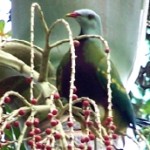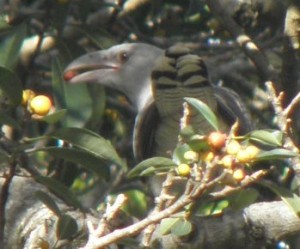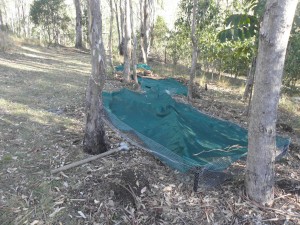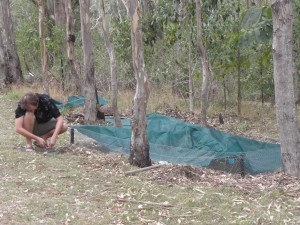Animals obviously need plants, but many plants also need animals. If all seeds drop beneath the mother tree, they’ll be competing with their mother and with their siblings for light, water, space and nutrients, and there may be heavy shade under the mother. They are also more easily found by seed-eating animals if they are in a big clump on the ground. The tree has a better chance of contributing to the next generation if its seeds are spread through the forest (or other habitat) in the hope that some of the sites are better for germination and survival. Many trees, shrubs, herbs and vines simply scatter their seeds in the wind, but in the rainforest there’s not so much breeze, and when there is, the seeds are likely to hit a neighbouring tree and thus not travel far.
Frugivory (fruit-eating) is obviously useful for the animals that derive the nutrients, and if they also digest the seed (as parrots and many pigeons do) it’s not much good for the plant. If however they only digest the soft parts and regurgitate or pass the seeds through their digestive tracts unharmed (as some of our pigeons do, and also bowerbirds, honeyeaters and many others) they also provide an unwitting service for the tree, vine or other plant they fed on.
I was attracted to the topic because it involves so many disciplines – conservation biology (we can’t think only in terms of conserving species,but need to consider the relationships between them and others they interact with, and are there particular animals that threatened =plants depend on, and threatened animals that depend on particular fruits, especially in lean seasons?), ecology, evolution, animals behaviour and physiology.
I’ve been conducting research on frugivory and seed dispersal, especially local birds that eat rainforest fruits, for some years now. One of the most popular fruit in our region – in terms both of of numbers of individual birds and the numbers of species feeding on the fruits – is a native fig Ficus rubiginosa (formerly regarded as F. platypoda). So why aren’t there more growing around here?
I’m currently looking at this and other local plant species from three angles: (1) what eats them and how frequently? (mostly looking at birds, but other creatures as well) (2) where do frugivorous birds sit when not feeding (and thus likely to deposit seeds) and (3) what conditions do they need for germination and growth?
I do most of the observations alone, but guests on our tours can also assist on forest walks by helping to find birds that are either eating fruit ( for 1 above) or doing other things (for 2 above).
For the third aspect of the study, I’ve been germinating seeds in the brush house, but am now about to embark on some experiment field plots. In the photos below, Darren is heeling set up some of these experimental plots which in the future can be viewed by visitors to the Araucaria property and which I hope will help answer some of my queries.
Frugivores other than birds include fruit bats and other mammals, some lizards (especially the larger skinks and dragons), fish (but not many in Australia) and ants, and we’re planning more observations of these.








